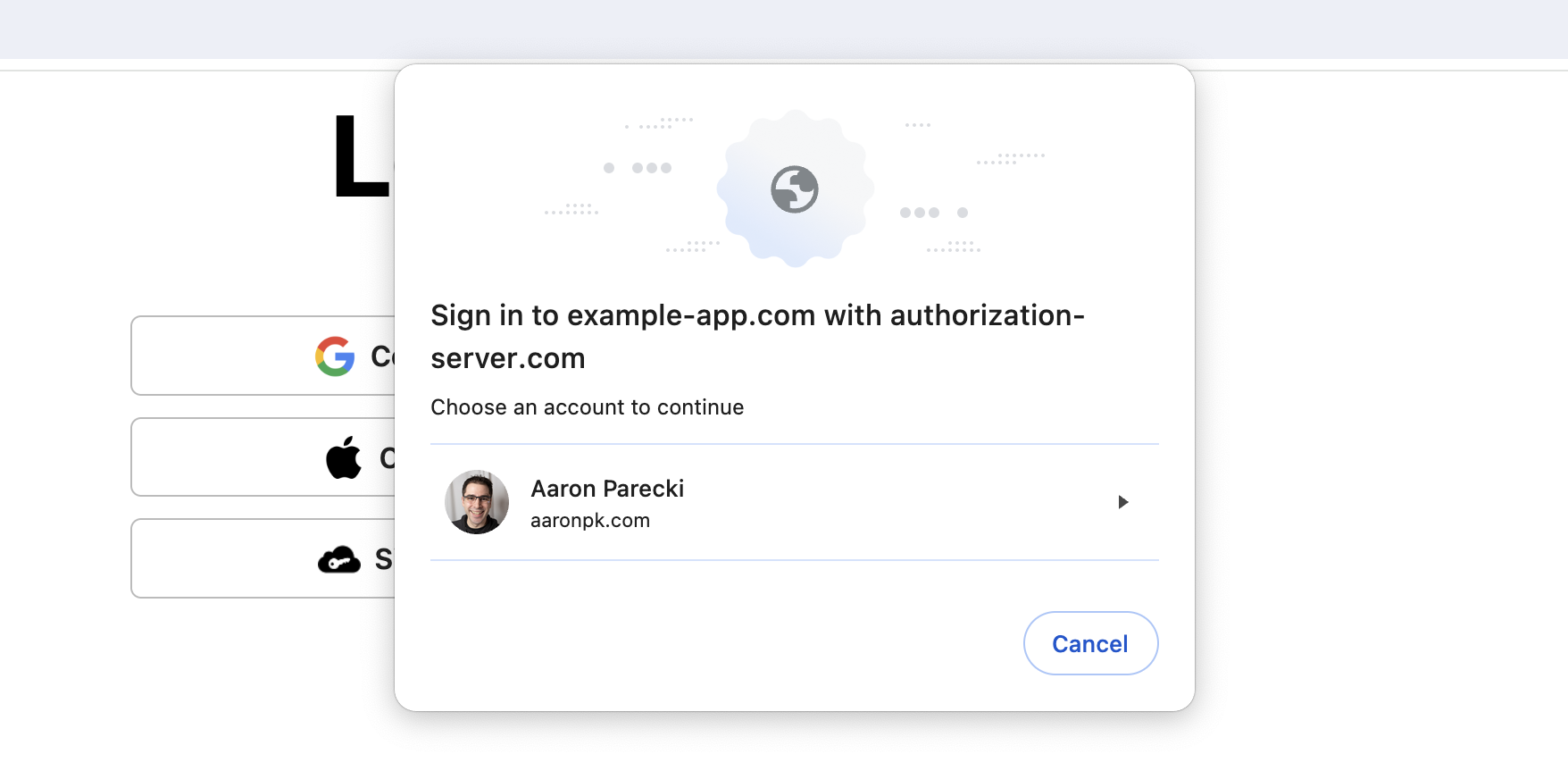FedCM for IndieAuth
2024-05-12T07:39:30-07:00IndieWebCamp Düsseldorf took place this weekend, and I was inspired to work on a quick hack for demo day to show off a new feature I've been working on for IndieAuth.
Since I do actually use my website to log in to different websites on a regular basis, I am often presented with the login screen asking for my domain name, which is admittedly an annoying part of the process. I don't even like having to enter my email address when I log in to a site, and entering my domain isn't any better.

So instead, I'd like to get rid of this prompt, and let the browser handle it for you! Here's a quick video of logging in to a website using my domain with the new browser API:
So how does this work?
For the last couple of years, there has been an ongoing effort at the Federated Identity Community Group at the W3C to build a new API in browsers that can sit in the middle of login flows. It's primarily being driven by Google for their use case of letting websites show a Google login popup dialog without needing 3rd party cookies and doing so in a privacy-preserving way. There's a lot to unpack here, more than I want to go into in this blog post. You can check out Tim Cappalli's slides from the OAuth Security Workshop for a good explainer on the background and how it works.
However, there are a few experimental features that are being considered for the API to accommodate use cases beyond the "Sign in with Google" case. The one that's particularly interesting to the IndieAuth use case is the IdP Registration API. This API allows any website to register itself as an identity provider that can appear in the account chooser popup, so that a relying party website doesn't have to list out all the IdPs it supports, it can just say it supports "any" IdP. This maps to how IndieAuth is already used today, where a website can accept any user's IndieAuth server without any prior relationship with the user. For more background, check out my previous blog post "OAuth for the Open Web".
So now, with the IdP Registration API in FedCM, your website can tell your browser that it is an IdP, then when a website wants to log you in, it asks your browser to prompt you. You choose your account from the list, the negotiation happens behind the scenes, and you're logged in!

One of the nice things about combining FedCM with IndieAuth is it lends itself nicely to running the FedCM IdP as a separate service from your actual website. I could run an IndieAuth IdP service that you could sign up for and link your website to. Since your identity is your website, your website would be the thing ultimately sent to the relying party that you're signing in to, even though it was brokered through the IdP service. Ultimately this means much faster adoption is possible, since all it takes to turn your website into a FedCM-supported site is adding a single <link> tag to your home page.
So if this sounds interesting to you, leave a comment below! The IdP registration API is currently an early experiment, and Google needs to see actual interest in it in order to keep it around! In particular, they are looking for Relying Parties who would be interested in actually using this to log users in. I am planning on launching this on webmention.io as an experiment. If you have a website where users can sign in with IndieAuth, feel free to get in touch and I'd be happy to help you set up FedCM support as well!